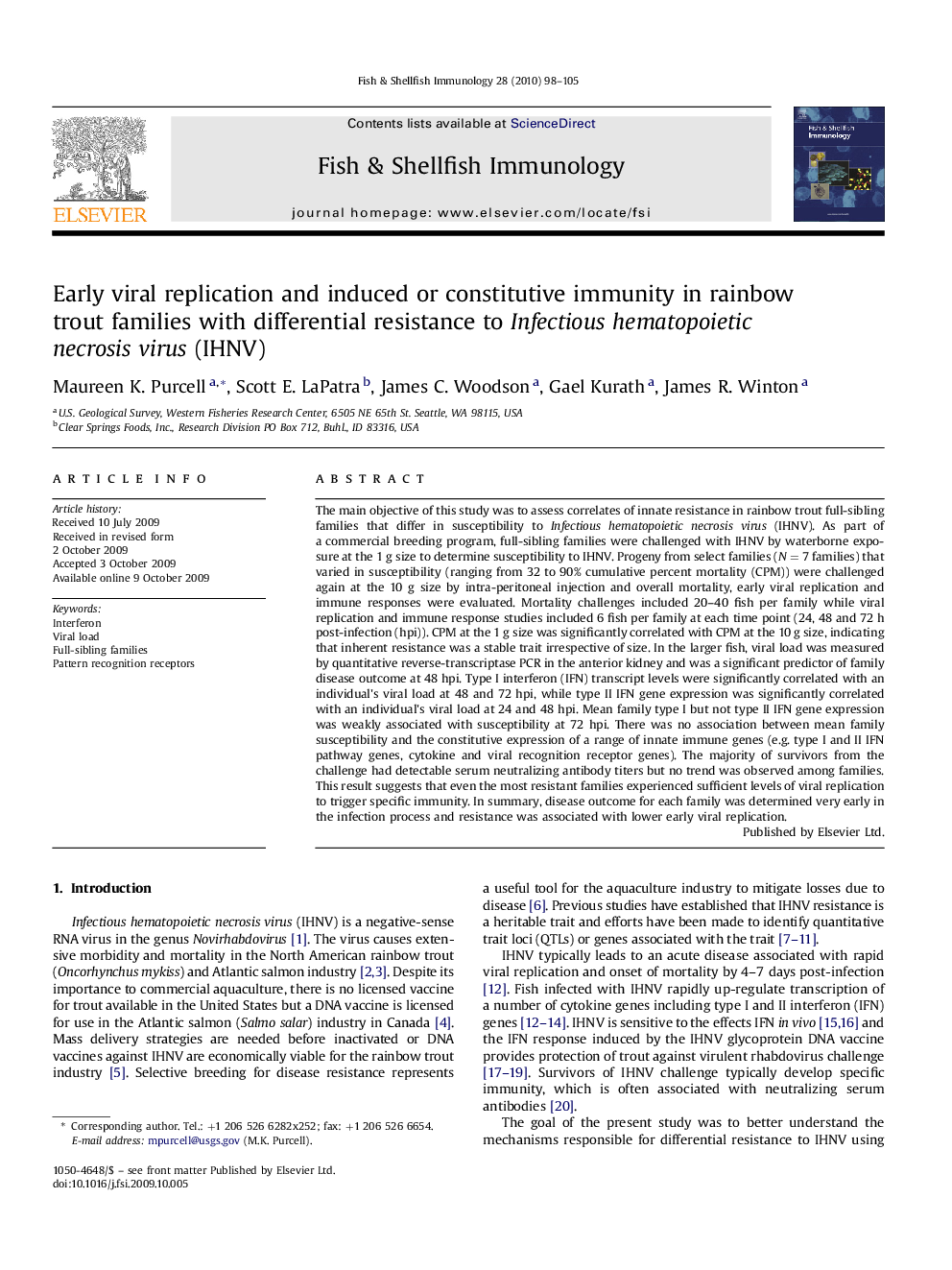| Article ID | Journal | Published Year | Pages | File Type |
|---|---|---|---|---|
| 2432919 | Fish & Shellfish Immunology | 2010 | 8 Pages |
The main objective of this study was to assess correlates of innate resistance in rainbow trout full-sibling families that differ in susceptibility to Infectious hematopoietic necrosis virus (IHNV). As part of a commercial breeding program, full-sibling families were challenged with IHNV by waterborne exposure at the 1 g size to determine susceptibility to IHNV. Progeny from select families (N = 7 families) that varied in susceptibility (ranging from 32 to 90% cumulative percent mortality (CPM)) were challenged again at the 10 g size by intra-peritoneal injection and overall mortality, early viral replication and immune responses were evaluated. Mortality challenges included 20–40 fish per family while viral replication and immune response studies included 6 fish per family at each time point (24, 48 and 72 h post-infection (hpi)). CPM at the 1 g size was significantly correlated with CPM at the 10 g size, indicating that inherent resistance was a stable trait irrespective of size. In the larger fish, viral load was measured by quantitative reverse-transcriptase PCR in the anterior kidney and was a significant predictor of family disease outcome at 48 hpi. Type I interferon (IFN) transcript levels were significantly correlated with an individual's viral load at 48 and 72 hpi, while type II IFN gene expression was significantly correlated with an individual's viral load at 24 and 48 hpi. Mean family type I but not type II IFN gene expression was weakly associated with susceptibility at 72 hpi. There was no association between mean family susceptibility and the constitutive expression of a range of innate immune genes (e.g. type I and II IFN pathway genes, cytokine and viral recognition receptor genes). The majority of survivors from the challenge had detectable serum neutralizing antibody titers but no trend was observed among families. This result suggests that even the most resistant families experienced sufficient levels of viral replication to trigger specific immunity. In summary, disease outcome for each family was determined very early in the infection process and resistance was associated with lower early viral replication.
